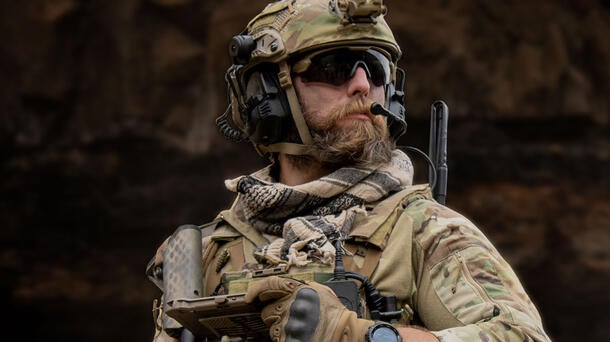LESSONS FROM UKRAINE
The ongoing Russian invasion of Ukraine has provided numerous lessons related to effective communications networking – and what communications resiliency is and is not.
“Events from the past year have validated and emphasized a vision for the new era of strategic competition,” said Gnam. “Electronic warfare is a deadly chess match. Robust, resilient communications enable troops to shoot, move and communicate in the 21st century.”
For instance, trying to “hide in plain sight,” masking tactical radio frequency signatures within an existing environment has proven ineffective, as the enemy can easily detect communications that either do not match signatures of the native network or operate outside the normal frequency band.
Additionally, emerging adversarial attack methods have exposed vulnerabilities in using only one technique to protect communication networks, such as trying to hide individual users among the mass of the network as a whole. L3Harris realized this concern well before the conflict and implemented several simultaneous and complementary methods to ensure resiliency. These include using multiple waveforms in different frequencies and employing different areas of the spectrum that have unique capabilities in every military’s PACE plan.
The L3Harris family of Falcon radios and extensive portfolio of resilient waveforms provide the secure communications necessary to support the U.S. military and allies’ JADC2 objectives. Adopting L3Harris’ security architecture and capability-enhancing mission modules further increase the radios’ benefits on the battlefield and speeds tactical data dissemination from the tactical edge to command.
“We provide a myriad of unique techniques and capabilities to ensure operators have everything they need – from pre-mission briefing to the end of their mission – all in one device,” said Carr. “With an AN/PRC-163, resilient communications is a preset away.”
- Ryan Carr, L3Harris Product Management Senior Manager
The next step for industry is enabling devices and networks to shift frequencies to avoid threats on their own, and we intend to be on the cutting edge of that development, added Gnam.








